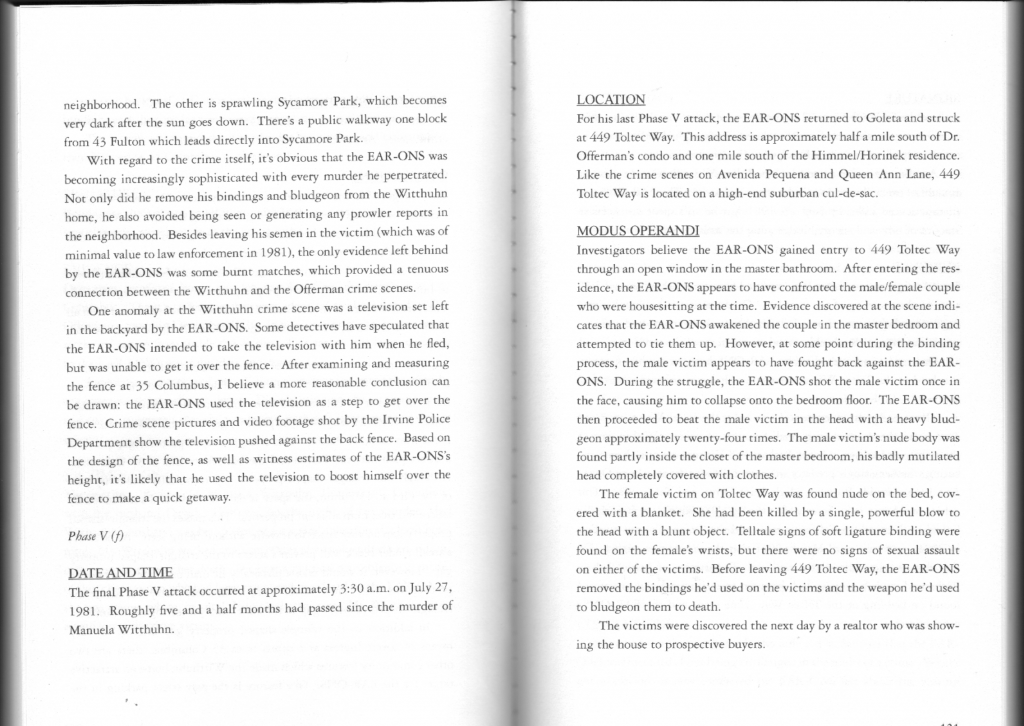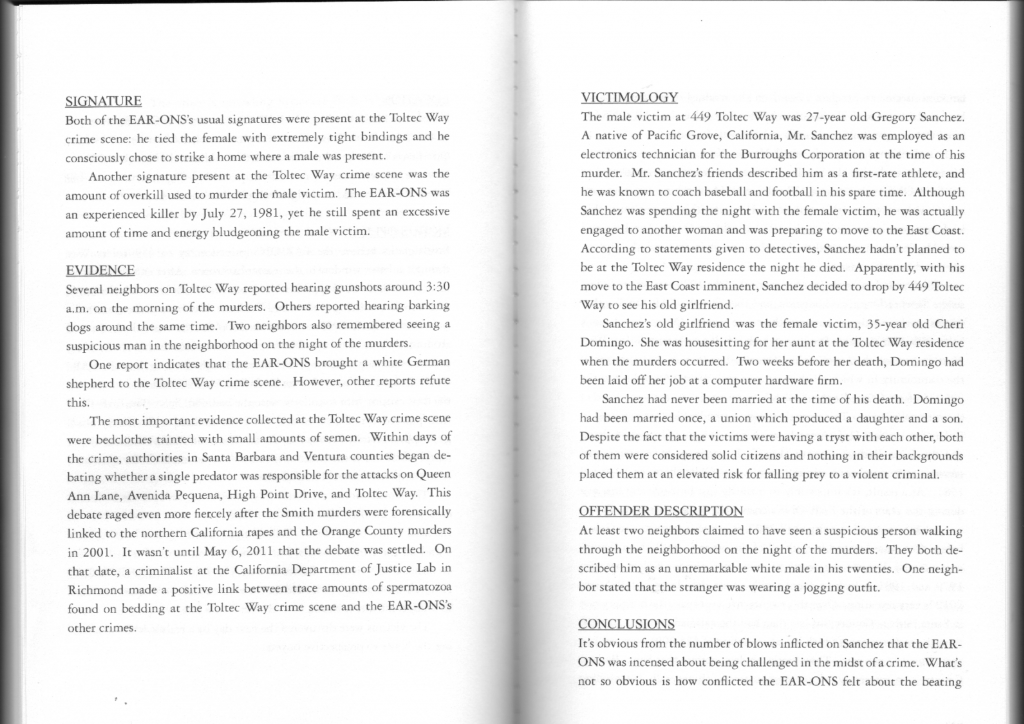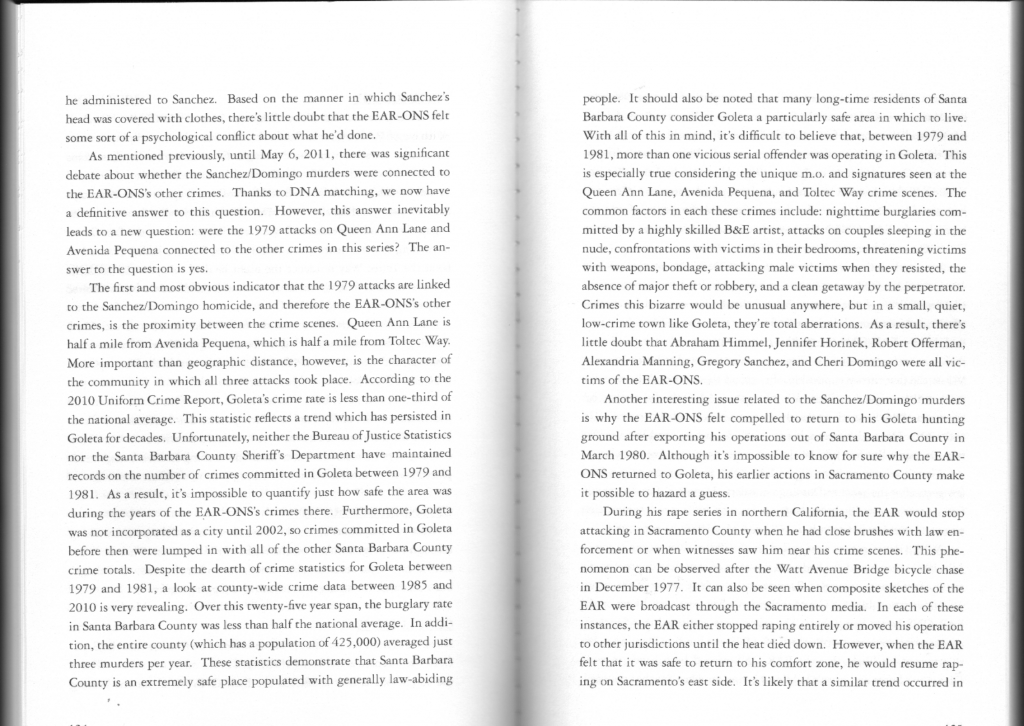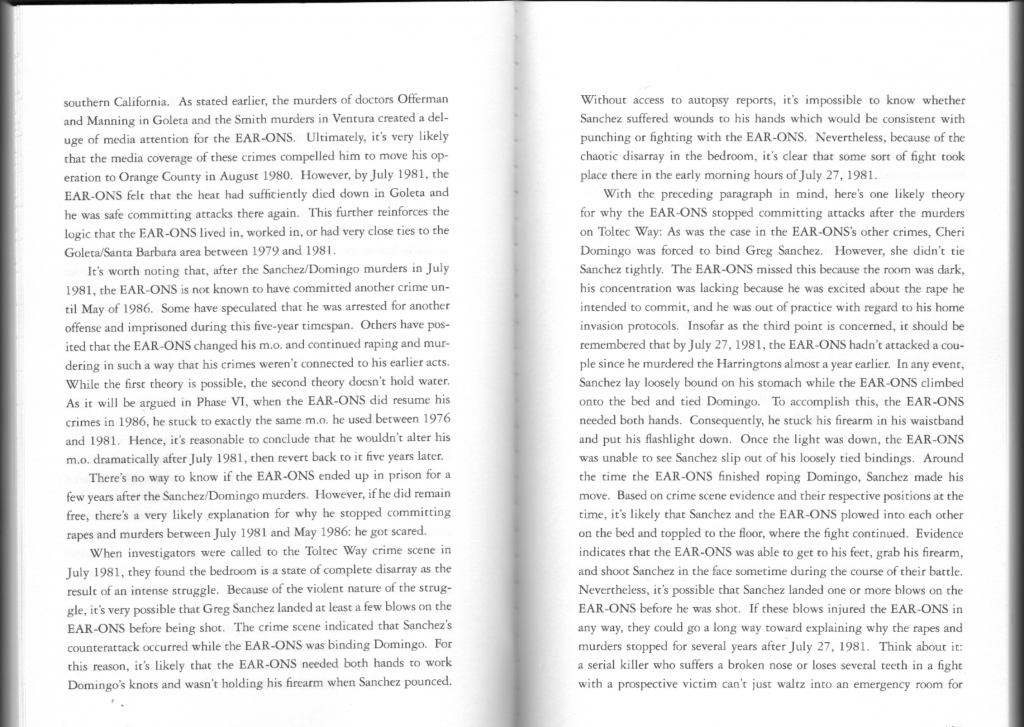Post by truthandsoul on Aug 30, 2013 5:27:07 GMT
The new book is here!
First, its not a reference book like Crompton's ST. I'd say its more of compliment to ST, providing some color commentary where you might've wished Crompton had. In fact, Gray pretty much identifies this in his Introduction. So it has more a analytical/psychology-bent to it; Gray has a degree in Criminal Justice and it lacks the narrative/non-fiction aspect of ST.
He's pretty methodical as he goes thru each of the SIX "phases" he identifies. Basically, the first four phases are EAR, grouped by how slight changes in his MO: going from single women(I) to couples (II), moving outside of Sacramento, etc. For each of the phases, he collects commonalities as:
DATES AND TIMES
LOCATION
MO
SIGNATURE
EVIDENCE
VICTIMOLOGY
OFFENDER DESCRIPTIONS
CONCLUSIONS
This helps with building up the phases and identifying shifts in EAR/ONS's MO. There's a few tidbits thrown, in here and there, but without supporting articles, its hard to feel empowered to dig deeper into them. He corroborates some odd facts we've discussed, for example, EAR's crying and stuttering at the crime scenes (I think starting in Phase III).
The last two phases are all the ONS murders (the last phase is Janelle). He has a lot of theories (I'll mention more below) about EAR/ONS and maybe sometimes goes a little overboard with his speculation (while otherwise trying to be analytical/objective).
He has a bit more detail that ST does on the ONS murders, or at least it feels that way. But there's nothing substantially new that isn't in ST (I'll mention some things below). The passage on Domingo/Sanchez is more detailed than anything else I've read.
So if each of Gray's phase summaries was directly behind the relevant cluster in ST, that would make a perfect(?) combination of the two.
In the introduction, he notes a psychological profile of EAR/ONS that was made by D'Ambrosia and Yarbough, which I am totally unfamiliar with. He wasn't too happy with that profile and seems to be trying to improve upon it and much of the rest of the book after the six phases are discussed comes back to filling out a psychological profile. Its an interesting read, but I think it amounts to the types of scenarios we all imagine when we think about why and how this man became EAR/ONS. So on one hand, its refreshing to read someone take that ball and run with it, but on the other hand, I have to disagree with the boldness of some of his assertions and directions.
In the end, he offers some explanations of what happened to him between '81 and '86 (see below for an interesting theory), what happened to him since '86 (he argues he's just been laying low or changed priorities), and why LE hasn't been able to catch him, but what they might be able to do to catch him (a "Supercop" for him to talk to, a $1million reward, etc.). Again, stuff we talk about here, and I think we reach more-or-less the same conclusions, so its at least affirming to read.
WARNING: POSSIBLE SPOILERS!!!
Here's a couple of tidbits that are interesting:
1) He feels VR became EAR. He has a brief section on VR, including the murder of Snelling and the shooting of McGowen.
2) He makes an interesting leap that the Jan 28, '78 attack on the two teenage sisters was a direct response to the media's coverage of Bundy's assault on the Chi-Omega coeds.
3) He thinks the story of the Danville man that confronted EAR (and his wife escaped) is B.S.
4) He thinks EAR/ONS fought with Sanchez, and that's why Sanchez received the overkill beating. He also speculates that Sanchez might've broken EAR/ONS's nose or knocked some teeth out, and that's why EAR/ONS disappeared for 5 years.
5) He speculates that the young EAR/ONS was an avid reader of the lurid detective magazines (and pornography).
6) The TV found in Manuela's backyard was just used to jump over the fence
7) He lived in or near Goleta for nearly all the Socal crimes, but radiated out to avoid detection.
8) All the murder victims were chosen at random.
9) There's a small section on Excitement's Crave; its in the format of a Shakespearan sonnet with some liberties.











